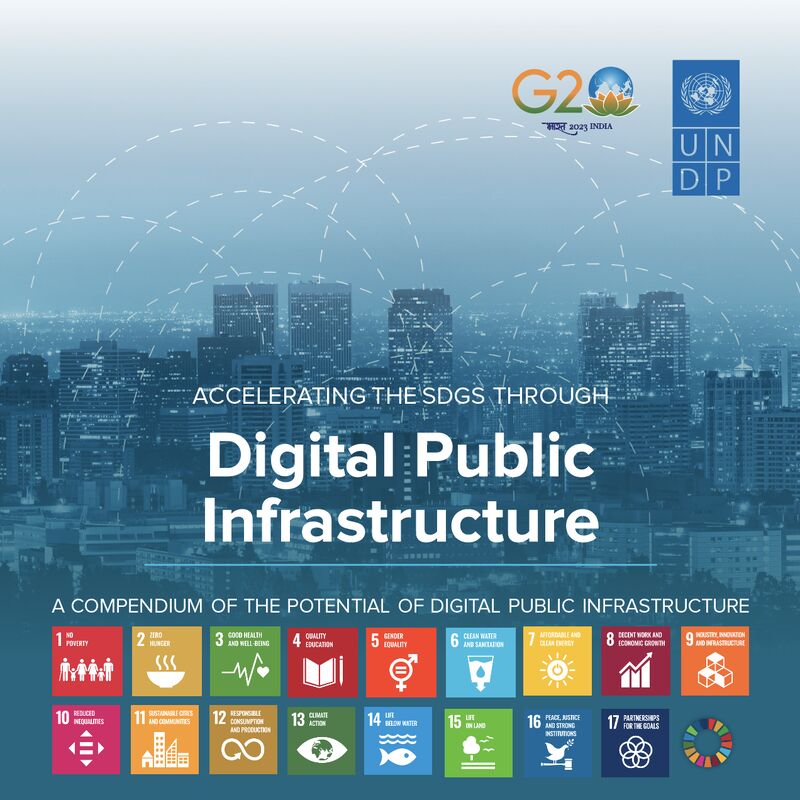Significance of Digital Public Infrastructure in Economy
Recently, Prime Minister announced the launch of two India-led initiatives: the Global Digital Public Infrastructure
Repository (GDPIR) and a Social Impact Fund, during the Virtual G20 Leaders’ Summit.

source: Internet
More on the News
• GDPIR is one of the three DPI deliverables that were endorsed by the G20 New Delhi Leaders’ Declaration.
• Other two deliverables include a Framework for building DPI and mobilizing finances for DPI development in Lowand Middle-Income Countries (LMICs).
Global Digital Public Infrastructure Repository (GDPIR) Social Impact Fund (SIF)
• Developed by: Ministry of Electronics & Information Technology.
• Aim: To bridge the knowledge gap in the choices and methodologies required for the design, construction,
deployment, and governance of DPIs.
• Constituents: GDPIR showcases the information in a standardized format from countries and organizations
that have developed DPIs at scale, incorporating elements such as maturity scales, source codes, and governance
frameworks.
o Currently, the GDPIR features 54 DPIs from 16 countries.
Social Impact Fund
• Aim: Envisioned as a government-led, multistakeholder initiative to fast-track DPI implementation in the global
south.
o It offers a platform for all relevant stakeholders to contribute to this fund and help accelerate the
achievement of the Sustainable Development Goals (SDGs) in LMICs through DPIs.
• Funding: India has pledged an initial commitment of 25 million USD to SIF.
o This fund will offer financial support to provide upstream technical and non-technical assistance to countries in
developing DPI systems.
Digital Public Infrastructure (DPI)
• DPI is a set of shared digital systems which are secure and interoperable, built on open standards and specifications to deliver and provide equitable access to public and/or private services at societal scale.
• Key pillars of DPI:
o Open, interoperable, extensible, and scalable technology.
o Robust governance framework with transparent legal framework, data protection mechanism, grievance redressal and protection of intellectual property.
o Resilient local ecosystems eliminating economic, technical or social barriers, ensuring community participation
and sustainability.
• Foundational elements: A strong DPI has three foundational systems—identity, payments, and data exchange.
o India’s DPI architecture, known as India Stack, consists of Aadhaar (identity), UPI and Aadhar enabled Payment
System (payments), and Digilocker and Account Aggregator (data exchange).

source: WEF
Significance of DPI for countries of Global South
• Inclusion: DPI helps overcome challenges of existing mechanisms that suffer from delays, leakages, and targeting
errors—often excluding women and other marginalized communities.
• Resilience: Public emergencies (like COVID-19 and natural disasters) may impair conventional modes of service
delivery.
o DPI helps overcome these barriers by enabling uninterrupted, remote assistance through digital networks
operating at national scale.
• Sovereignty: Centralized decision-making and legacy software restrict countries from imagining new digital solutions.
o DPI are open and interoperable, which offers countries the autonomy and flexibility to plan, design, and
implement their digital systems.
• Innovation: The DPI approach allows multiple stakeholders—governments, private sector, and civil society—to
collaborate and contribute to innovation in the digital ecosystem, enabling fair market competition.
• Socio-economic outcomes: DPI incentivizes entrepreneurship, advances competition, improves quality of life and enhances business opportunities.
o For instance, India’s DPI has transformed Indian economy, bolstered productivity and supported equitable
growth.
India’s role in promoting DPI at global level
• Identity system: International Institute of Information Technology (IIIT) in Bengaluru launched the Modular Open Source Identity Platform (MOSIP) to help other countries set up Aadhaar-like systems.
o More than 10 countries, from Sri Lanka to Sierra Leone, have initiated MOSIP projects so far.
• Payment linkages: India has signed agreements with various nations to extend the reach of its UPI payment system, like Singapore, Malaysia, UAE, France etc.
• G20 Consensus: Under India’s presidency, G20 leaders arrived at a consensus regarding promotion and adoption of DPI framework.
• Alternative Model: India’s DPIs offer an alternative model to the traditional “big tech” approach, emphasizing public ownership and control of critical infrastructure.
• One Future Alliance (OFA): India proposed OFA for building capacity and providing technical assistance and funding support for implementing DPI in LMICs.
• Open Source Infrastructure: India’s commitment to open source technology has prevented the privatization of critical infrastructure and fostered innovation which enables their flexible adoption at global scale.
Conclusion
DPI systems are not a panacea and if poorly designed can lead to severe lapses in data privacy and user protection.
However, if built with foresight, DPIs can boost economic activity and help communities lead more meaningful lives. In the coming decade, efficient implementation of DPI in yet-to-be-tapped sectors could potentially determine how we grow as a nation.
